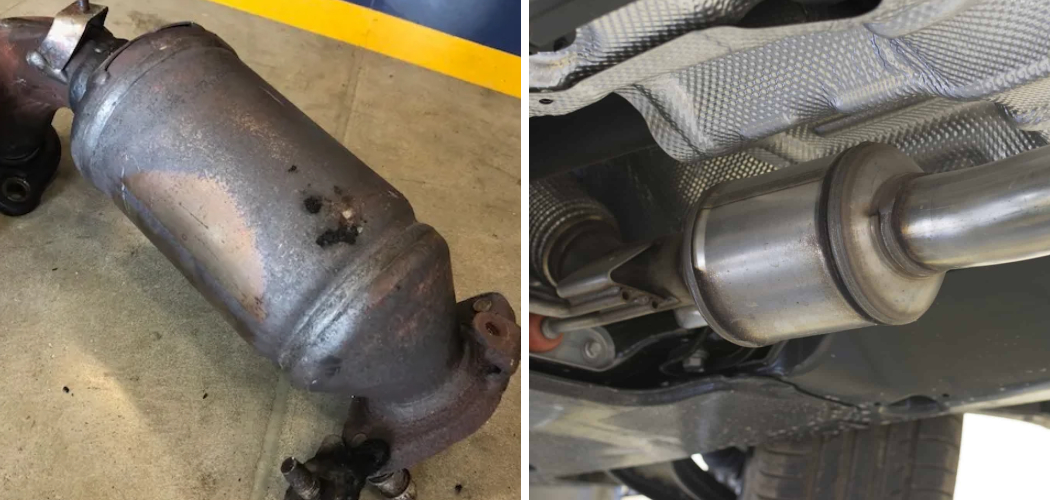Are you noticing a strange smell coming from your car? Do loud noises and sputtering engine performance accompany it? These are some of the signs that your catalytic converter may be overheating.
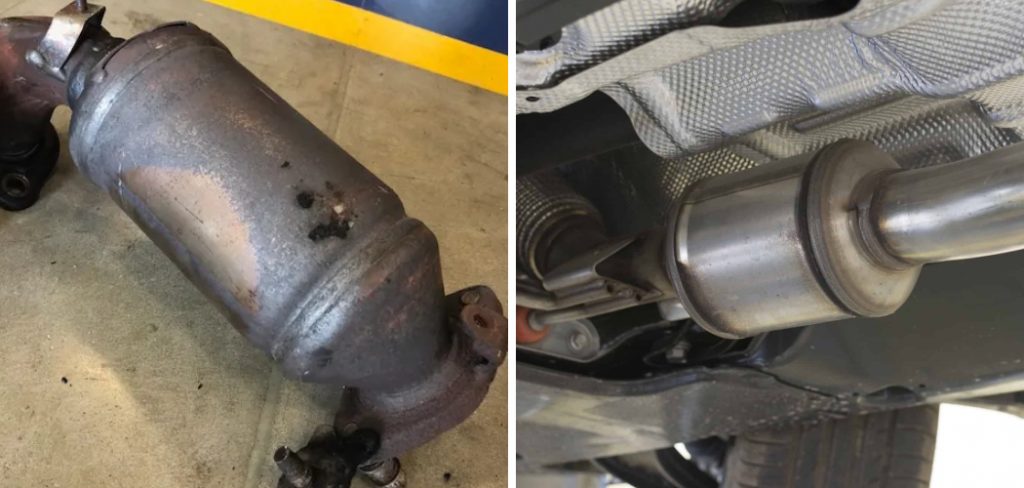
An overheating catalytic converter is not just a minor inconvenience—it’s a red flag that your vehicle may be experiencing severe issues. The catalytic converter’s primary function is to transform harmful exhaust gases into less toxic pollutants before they leave your car’s exhaust system. However, when it overheats, it can decrease vehicle performance, increase emissions, and potentially damage the converter itself, which can be quite costly to replace.
In this guide, we will cover the steps of how to fix overheating catalytic converter, ensuring your vehicle runs efficiently and stays environmentally compliant.
What are the Benefits of a Catalytic Converter?
Before we delve into the steps of fixing an overheating catalytic converter, let’s first understand why it is such an essential component in your vehicle.
The primary benefit of a catalytic converter is that it helps reduce harmful emissions from your car. It converts toxic gases like carbon monoxide, nitrogen oxides, and hydrocarbons into less harmful substances like carbon dioxide, nitrogen, and water vapor.
Aside from being environmentally friendly, a functioning catalytic converter also ensures that your vehicle complies with emission regulations in most countries. With it, your car would pass emissions testing and could result in hefty fines or even the revocation of your vehicle registration.
What Will You Need?
Before we dive into the steps of fixing an overheating catalytic converter, let’s first gather all the necessary tools and materials. Here are some items that you will need to complete this task successfully:

- A Car Jack or Ramp: You will need to elevate your vehicle for better access to the exhaust system.
- Protective Gear: It is always recommended to wear gloves, safety glasses, and a dust mask when working on your car.
- A Socket Set: This includes various sizes of sockets to loosen and tighten bolts.
- Pliers: Used for gripping and maneuvering parts.
- A New Catalytic Converter: If the damage is significant or irreversible, you may need to replace your current one with a new one.
Once you have all the necessary tools and materials, let’s move on to the steps of fixing an overheating catalytic converter.
10 Easy Steps on How to Fix Overheating Catalytic Converter
Step 1: Identify the Problem
The first step in solving any problem is to identify the root cause. In the case of an overheating catalytic converter, you will need to carefully examine your vehicle to pinpoint signs that may be indicative of this issue. Common indicators to look for include:
- Strong Odors: A noticeable and strong smell akin to rotten eggs is a crucial sign of a failing catalytic converter due to sulfurous compounds in the trapped exhaust gases.
- Check Engine Light: The illumination of the check engine light on your dashboard can indicate numerous issues, including an overheating catalytic converter.
- Reduced Acceleration and Engine Performance: If your vehicle hesitates or stutters during acceleration, this might be a symptom of an overly hot converter hindering exhaust flow.
- Excessive Heat Under the Vehicle: Excessive heat from the floor of your vehicle, especially near the exhaust system, could be caused by an overheating catalytic converter.
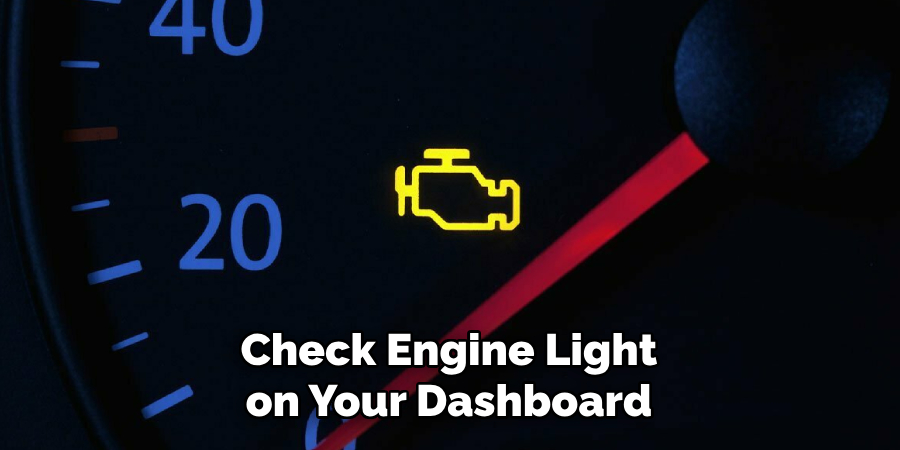
Step 2: Inspect for Physical Damage
Once you’ve identified signs of an overheating catalytic converter, the next step is to inspect it for any physical damage visually. Carefully raise your vehicle using a car jack or ramp, ensuring it’s securely supported before you proceed. Look for signs of dents, holes, or corrosion on the catalytic converter shell.
These kinds of damages can cause blockages or leaks that may lead to overheating. Also, be sure to check the exhaust pipes leading into and out of the catalytic converter for any disconnection or damage. If you notice any severe damage, consider replacing the catalytic converter.
Step 3: Check for Engine Tune-Up
A poorly tuned engine can lead to incomplete combustion, which generates more exhaust gases—some of which may be too rich for the catalytic converter to process efficiently, causing it to overheat. Conduct a thorough engine tune-up, checking the spark plugs for wear and ensuring they are firing correctly.
The ignition system should deliver a strong enough spark, and the fuel mixture should be set to the manufacturer’s specifications. Replace any worn parts as necessary. This step can significantly reduce the workload on your catalytic converter and may solve the overheating issue.
Step 4: Clean the Catalytic Converter
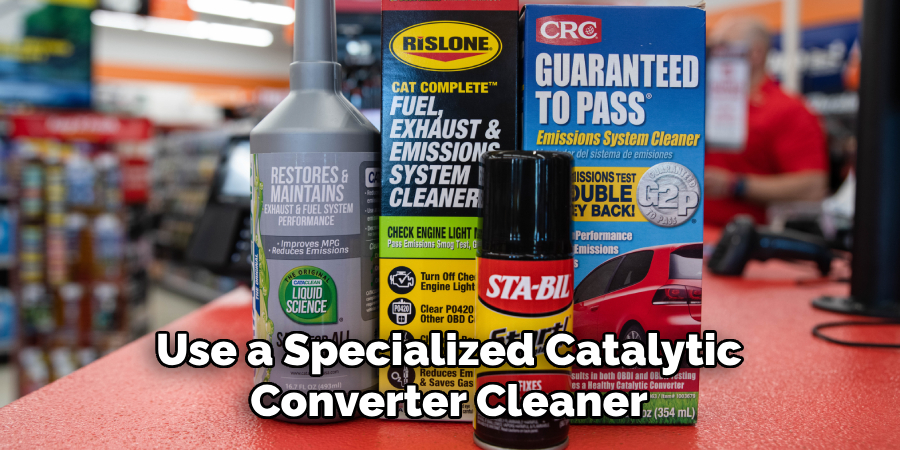
Sometimes, the catalytic converter is simply clogged with carbon deposits and requires cleaning rather than replacement. Use a specialized catalytic converter cleaner designed to reduce carbon buildup and help restore proper exhaust flow. Add the cleanser to your fuel tank following the manufacturer’s instructions and run the engine at idle or drive your car for a certain period to ensure the cleaner works through the exhaust system.
This should help burn off deposits that are clogging the converter. After applying the cleaner, monitor the performance of your vehicle and the symptoms that indicate an overheating catalytic converter to determine if this step has resolved the issue.
Step 5: Ensure Proper Exhaust Flow
Another potential cause of an overheating catalytic converter is an obstruction in the exhaust flow. After cleaning the converter, inspect the exhaust system for any bends, crushes, or collapsed sections that might hinder the exhaust gas from flowing freely.
Also, check for a clogged muffler or resonator. If any obstructions are found, they must be repaired or replaced to restore proper exhaust flow. Ensure the exhaust hangers are also intact and the entire system is at the correct height to avoid any unwanted contact with the road or debris that could cause damage.
Step 6: Replace Faulty Oxygen Sensors
Faulty oxygen sensors can contribute to the overheating of your catalytic converter. These sensors are responsible for monitoring the oxygen levels in the exhaust gases and informing the engine’s computer to adjust the air/fuel mixture accordingly. If they’re not functioning correctly, this can lead to an improper combination that causes excessive heat.
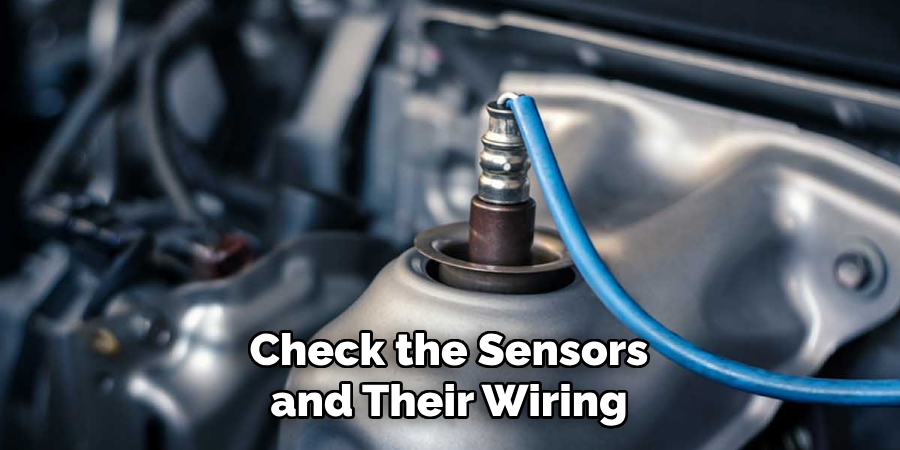
Check the sensors and their wiring for any signs of damage or wear. If they appear faulty or have surpassed their service life, replace the oxygen sensors to ensure accurate readings and optimal engine performance.
Step 7: Test the Cooling System
The engine’s cooling system plays a crucial role in maintaining the temperature of the catalytic converter. A malfunctioning cooling system can cause the engine to run hotter, thereby increasing the temperature of the exhaust gases and the converter itself. Test the cooling system for leaks, check the radiator cap for a proper seal, and ensure the thermostat opens at the correct temperature.
It’s also vital to verify that the coolant is at the appropriate level and to flush or replace old or contaminated coolant according to the manufacturer’s recommendations. These actions will help prevent the engine and the catalytic converter from running too hot.
Step 8: Seek Professional Assistance
If your catalytic converter continues to overheat after performing all the previously outlined steps, it may be time to consult a professional mechanic. A certified technician can conduct more in-depth diagnostics, potentially identifying less obvious issues within your vehicle’s emission system.
They have access to advanced tools and diagnostic equipment that can pinpoint underlying problems that might not be apparent during a standard inspection. Remember, prolonging the repair may lead to more significant damage to the catalytic converter and the vehicle’s engine and environment due to increased emissions.
Step 9: Consider Replacement Options
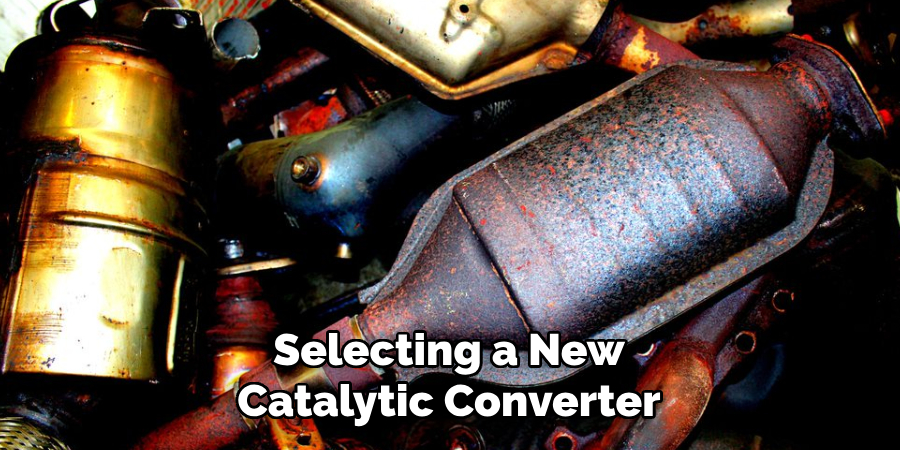
If your catalytic converter still suffers from overheating issues after exhaustive troubleshooting, consider replacement options. When selecting a new catalytic converter, ensure it is compatible with your vehicle’s make and model. You can choose between OEM (Original Equipment Manufacturer) parts or aftermarket parts, keeping in mind that quality can vary widely in the aftermarket.
It’s also crucial to check the warranty and longevity of the replacement converter. Installation should be performed by a professional to guarantee that the new converter fits appropriately and functions correctly, ensuring your vehicle operates within legal emission standards and optimizes fuel efficiency.
Step 10: Regular Maintenance and Monitoring
After addressing the overheating issues with your catalytic converter, it’s essential to implement regular maintenance and monitoring to prevent future problems. Stick to a routine service schedule, ensuring that all previous steps, such as checking the exhaust system, testing oxygen sensors, and inspecting the cooling system, are performed regularly.
Keep an eye on your engine’s performance and be aware of any check engine lights or codes that may indicate a return of the issue. Staying proactive with the health of your catalytic converter can prolong its lifespan and ensure that your vehicle remains efficient and environmentally friendly.
Following these steps, you can effectively troubleshoot and resolve an overheating catalytic converter.
5 Additional Tips and Tricks
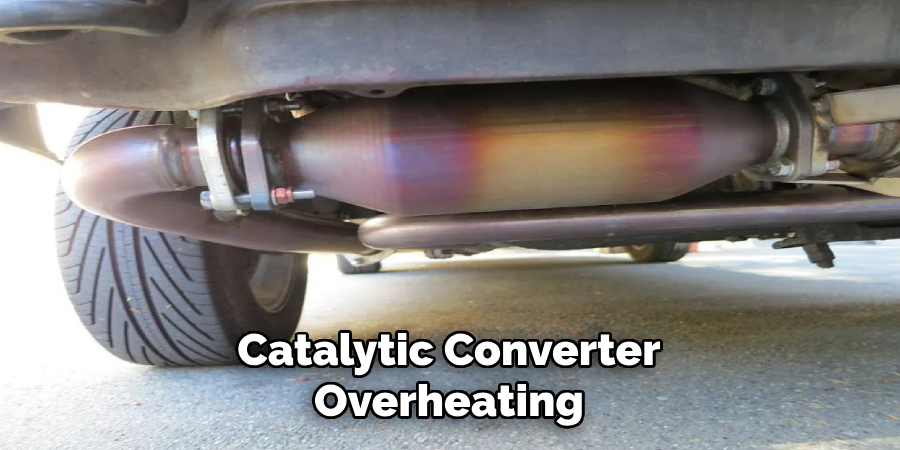
- Use High-Quality Fuel: The quality of the fuel you use can significantly impact your catalytic converter’s health. Utilize high-quality, clean energy without contaminants that could lead to carbon buildup and catalytic converter overheating.
- Avoid Short Trips: Short trips where the engine does not reach its optimal operating temperature can lead to excessive carbon deposits in the exhaust system, including the catalytic converter. Try to drive your car for extended periods to maintain a temperature that allows for complete combustion.
- Regular Engine Tune-ups: Keeping your engine finely tuned is crucial for the longevity of the catalytic converter. Regular engine tune-ups can help maintain the proper air-to-fuel ratio and prevent raw fuel from entering the catalytic converter, which can cause it to overheat and fail.
- Install a Heat Shield: If overheating is a persistent issue, consider installing a heat shield around the catalytic converter. This can help to protect the converter from excessive heat and extend its lifespan.
- Inspect for Engine Misfires: An engine misfire can send unburned fuel into the exhaust system, which can cause the catalytic converter to overheat rapidly. Be vigilant of engine misfire symptoms, such as rough idling or difficulty starting the engine, and address them promptly.
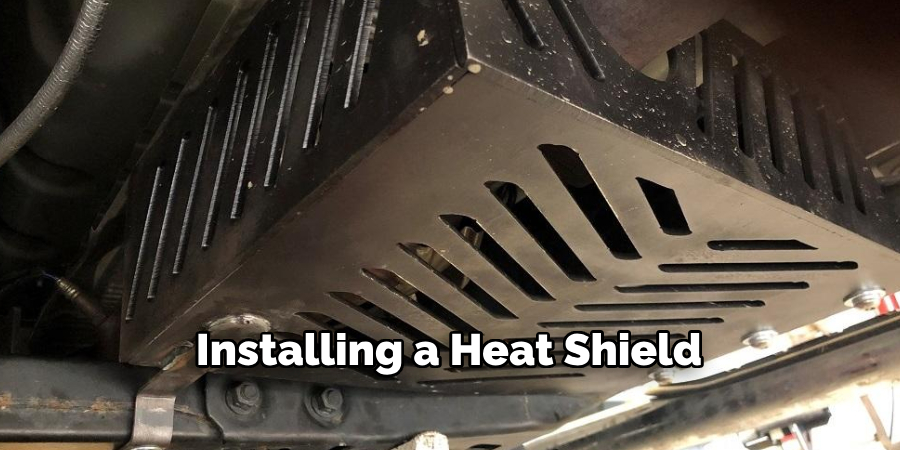
With these additional tips and tricks, you can further prevent and resolve issues with your catalytic converter’s overheating.
6 Things You Should Avoid
- Ignoring Warning Signs: Disregarding early symptoms such as a check engine light or a sulfur smell can lead to more severe issues.
- Delaying Regular Maintenance: Postponing routine check-ups and oil changes can cause buildup that may lead to overheating.
- Using Low-Quality Fuel: Inferior fuel can create more deposits and clog the catalytic converter, causing it to overheat.
- Installing Incompatible Parts: Using incompatible or low-quality replacement parts can decrease efficiency and increase the risk of overheating.
- Improper DIY Fixes: Fixing the issue yourself without proper knowledge can do more harm than good. Always consult with a professional.
- Continuously Driving with a Hot Catalytic Converter: If your catalytic converter is consistently overheating, it’s crucial to address the issue immediately. Continuing to drive with an overheating converter can lead to permanent damage and costly repairs.
By avoiding these common mistakes, you can prolong the lifespan of your catalytic converter and prevent costly repairs.
What Causes a Hot Catalytic Converter?
A hot catalytic converter can be caused by a variety of factors, including:
- Poor Engine Performance: A malfunctioning engine can cause the fuel-to-air ratio to be imbalanced, increasing exhaust gas temperatures and overheating the catalytic converter.
- Excessive Fuel Consumption: When an excessive amount of unburned fuel enters the catalytic converter, it can cause it to overheat and potentially fail.
- Clogged Exhaust System: A clogged exhaust system can restrict the flow of gases, causing them to back up and increase the temperature within the catalytic converter.
- Faulty Oxygen Sensors: Oxygen sensors are vital in regulating the fuel-to-air ratio. If they are not functioning correctly, it can lead to an increase in the temperature of the catalytic converter.
- Engine Misfires: Engine misfires can cause unburned fuel to enter the exhaust system and overheat the catalytic converter.
- Contaminated Fuel: Low-quality fuel or fuel contaminated with debris or water can lead to carbon buildup within the catalytic converter, causing it to overheat.
Knowing these potential causes can help you troubleshoot and prevent future overheating issues with your catalytic converter. Regular maintenance and proactive monitoring are crucial in ensuring your vehicle’s catalytic converter remains functional and efficient. So, be attentive to any warning signs and address them promptly to avoid costly repairs or replacements in the future.
Is It Normal for a Catalytic Converter to Get Hot?
Yes, it is entirely normal for a catalytic converter to get hot. Catalytic converters are designed to operate at high temperatures. The chemical reactions that reduce harmful emissions occur most efficiently at temperatures ranging from 800 to 1,800 degrees Fahrenheit.
However, it is abnormal for the converter to become excessively hot to the point of glowing red or causing nearby components to smoke or burn. Suppose the catalytic converter is running hotter than usual. In that case, it indicates a problem in the vehicle’s exhaust system or engine management that needs to be diagnosed and resolved as soon as possible to avoid damage to the converter and potential safety hazards.
Overall, regular maintenance, proactive monitoring, and prompt attention to any warning signs can help prevent your catalytic converter from overheating and ensure the efficient and environmentally friendly operation of your vehicle.
Is Catalytic Converter Cleaner Bad for Engine?
There is controversy surrounding the use of catalytic converter cleaner and its impact on an engine. While these cleaners are designed to remove carbon buildup and improve the converter’s efficiency, they can also potentially damage other components in the engine if not used properly.
Some manufacturers warn against using catalytic converter cleaners, as they may contain harsh chemicals that can harm oxygen sensors or other sensitive engine components. Additionally, using cleaners too frequently or in excessive amounts can lead to an over-cleaning of the converter, resulting in reduced efficiency and potential overheating.
It is best to consult a mechanic before using any catalytic converter cleaner or following the manufacturer’s instructions carefully to avoid damaging your engine or other components. Regular maintenance and proper usage of high-quality fuel are typically sufficient to keep the catalytic converter functioning properly.
Conclusion
To remediate an overheating catalytic converter, addressing the underlying issues promptly is crucial. Begin by ensuring that your vehicle undergoes regular maintenance as recommended by the manufacturer. During servicing, request a thorough exhaust system inspection to identify potential problems before they escalate.
If the check engine light appears, diagnose the issue with a certified mechanic and repair it immediately. Always use high-quality fuel and approved parts to maintain optimal engine performance.
In the case that your catalytic converter is already malfunctioning, seek professional assistance to assess whether cleaning or replacement is required. Remember, proactive vehicle care is key to avoiding overheating issues and extending the life of your catalytic converter.
Hopefully, this guide on how to fix overheating catalytic converter has provided valuable insight into the importance of properly maintaining your vehicle’s catalytic converter.

